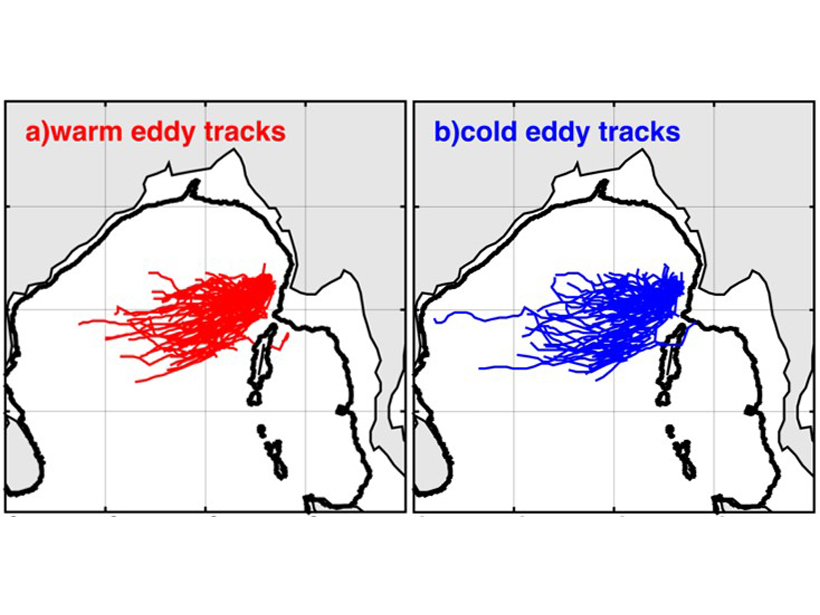Source: Journal of Geophysical Research: Oceans
The mechanism of ocean eddy generation in the Bay of Bengal is examined by Cheng et al. [2018] using both observations and model simulations. The intraseasonal wind forcing over the equatorial Indian Ocean and coastal bathymetry play a major role for their generation. When equatorial and coastal Kelvin waves propagate to the tip of the Irrawaddy Delta off Myanmar, eddies are generated and subsequently propagate southwestward. The authors suggest that nonlinearity and the topographic “bump” of Myanmar are critical for eddy generation. This study is expected to usher further research on eddies and their impacts on biogeochemical cycles, freshwater flux and salt and heat transports in the Bay of Bengal.
Citation: Cheng, X., McCreary, J. P., Qiu, B., Qi, Y., Du, Y., & Chen, X. [2018]. Dynamics of eddy generation in the central Bay of Bengal. Journal of Geophysical Research: Oceans, 123. https://doi.org/10.1029/2018JC014100
—Lei Zhou, Editor, JGR: Oceans
Text © 2018. The authors. CC BY-NC-ND 3.0
Except where otherwise noted, images are subject to copyright. Any reuse without express permission from the copyright owner is prohibited.

